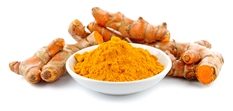How to Detect Petrochemical Adulteration in Curcumin
Curcumin is one of the major curcuminoids found in turmeric and has many uses from food and supplements to cosmetics. In 2015, the size of the curcumin market exceeded $39 million with the majority of use seen in the pharmaceutical and food industries.1 As consumers have become increasingly health and environmentally conscious, the demand for naturally sourced ingredients has grown across many industries, as has been seen for curcumin.
Curcumin’s distinctive yellow color and flavor have made it a popular spice. It has also been used in traditional medicines. The use of curcumin in cosmetics has originated from the increasing desire for natural products and its associated health benefits.
As a supplement it is seeing a boost in usage based on its health benefits.2 Due to turmeric having low bioavailability, curcumin itself is preferred for use in the supplement form. Curcumin is known as an anti-oxidant, anti-inflammatory and even a defense against Alzheimer’s disease and cancer. There has, however, also been some skepticism on the its effectiveness due to bioavailability issues.3,4
Curcumin Adulteration – Natural Product Testing
 The natural source of curcumin is the turmeric plant. However, it is cheaper to produce synthetically from petrochemicals. With its myriad of uses and applications and increasing popularity, it is no surprise that curcumin is prone to economic adulteration with the cheaper to produce petrochemical sourced form. This also means that the detection of this adulteration has become increasingly important for manufacturers and suppliers of curcumin, both for quality control and as an assurance to consumers proving the authenticity of natural curcumin.
The natural source of curcumin is the turmeric plant. However, it is cheaper to produce synthetically from petrochemicals. With its myriad of uses and applications and increasing popularity, it is no surprise that curcumin is prone to economic adulteration with the cheaper to produce petrochemical sourced form. This also means that the detection of this adulteration has become increasingly important for manufacturers and suppliers of curcumin, both for quality control and as an assurance to consumers proving the authenticity of natural curcumin.
The Carbon-14 content of a material accurately indicates the proportion of naturally sourced curcumin. The analytical standard ISO 16620-2 outlines the measurement of the percentage of biobased carbon content out of the total carbon (TC) or total organic carbon (TOC) in a product using the Carbon-14 method. More details on the basis of Carbon-14 testing can be found in this curcumin page.
Beta Analytic – A Natural Product Testing Laboratory
Beta Analytic is an ISO 17025-accredited facility in Miami, Florida, that provides natural product sources testing using the Carbon-14 method and reports results according to the analytical standards ASTM D6866 and ISO 16620-2. For price or turnaround time inquiries, contact Beta Analytic at info@betalabservices.com or call a local forwarding office.
Sources:
(1) Global Market Insights. 2016. Curcumin Market Size By Application, Industry Analysis Report, Regional Outlook, Growth Potential, Price Trend, Competitive Market Share & Forecast, 2016 – 2024. Global Market Insights. (accessed July 2017).
(2) Majeed S. 2015. The State of the Curcumin Market. Natural Products Insider. (accessed July 2017).
(3) Gupta SC, Patchva S, Aggarwal BB. Therapeutic Roles of Curcumin: Lessons Learned from Clinical Trials. The AAPS Journal. 2013;15(1):195-218. doi:10.1208/s12248-012-9432-8.
(4) MacMillan A. 2017. Turmeric May Not Be a Miracle Spice After All. Time. (accessed August 2017).
This entry was posted on Sunday, August 13th, 2017 and is filed under Natural Product Testing, Supplement Carbon-14 Testing .